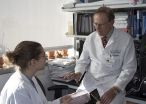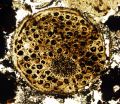(Press-News.org) Geographers at the University of Southampton have developed a new way to measure the 'health' of poor regional communities. They aim to improve the wellbeing of people by guiding sustainable development practices to help avoid social and environmental collapse.
The researchers have pioneered a methodology that examines the balance between factors such as; standards of living, natural resources, agriculture, industry and the economy. The results help identify critical limits, beyond which regions risk tipping into ecological and social downturn, or even collapse.
The project is supported by the UK Government through the Ecosystem Services for Poverty Alleviation (ESPA) research programme.
Professor John Dearing, who led the research, comments: "People living in a region need to consume some of its resources to satisfy basic needs, such as clean water, food, health services and education. However, if the balance tips too far and the impact of this consumption out-strips resources, people's welfare and wellbeing can be hindered rather than helped.
"We have found a way of defining a 'safe space' for communities to consume resources and operate within – particularly with regard to poor rural areas in developing nations. This 'safe space' has been theorised in the past on a global scale, but by downscaling it to a regional level, we have been able to shape it into a practical tool providing crucial data for decision makers."
Firstly, the scientists use local survey statistics to examine the state of a region's social foundation, covering factors like health, clean water, income levels and education. They couple this information with environmental monitoring records to establish the health of its ecology and whether or not collapse is a risk. For example, a lake region suffering stagnation of its water might be one form of environmental collapse.
The information the researchers examine dates back over several decades to identify long-term trends. By combining all the data, they can model scenarios for the future, which can help regional managers to make informed decisions.
Professor John Dearing says: "You could think of our 'safe operating space' as the hole in a doughnut, with everything operating in the middle maintaining a relatively healthy balance. However, anything pushing out beyond the ring might upset the balance and tip a community beyond sustainable levels."
The Southampton team trialled their technique in two rural agricultural communities in China; Shucheng County and Erhai Lake. They found that in both cases agricultural intensification had led to a reduction in poverty, but at the expense of the environment.
The results showed water quality is poor in both regions, along with inadequate sanitation and piped water. This underlines the link between agricultural and environmental markers (such as water quality) and social factors (such as sanitation) and how they are closely interrelated and affect one another. It also emphasises the value of a tool to bring together diverse data to give a clear, full picture of a region's health.
The paper 'Safe and just operating spaces for regional social-ecological systems' is Open Access, published in Global Environmental Change and can be found at: http://www.sciencedirect.com/science/article/pii/S0959378014001174
INFORMATION:
Notes for editors:
1) For more information and interviews with the key researchers, please contact Peter Franklin, Media Relations, University of Southampton.
Tel ++44 23 8059 5457 email: p.franklin@soton.ac.uk
2) The Ecosystem Services for Poverty Alleviation (ESPA) programme (http://www.espa.ac.uk) is a global development research programme funded by the UK Government, supported by the Natural Environment Research Council, Department for International Development and the Economic and Social Research Council. ESPA aims to provide new provide world-class research evidence demonstrating how ecosystem services can reduce poverty and enhance well-being for the world's poor. http://www.espa.ac.uk
3) Through world-leading research and enterprise activities, the University of Southampton connects with businesses to create real-world solutions to global issues. Through its educational offering, it works with partners around the world to offer relevant, flexible education, which trains students for jobs not even thought of. This connectivity is what sets Southampton apart from the rest; we make connections and change the world. http://www.southampton.ac.uk/
http://www.southampton.ac.uk/weareconnected
#weareconnected
For further information contact:
Peter Franklin, Media Relations, University of Southampton, Tel: 023 8059 5457, email: p.franklin@soton.ac.uk
http://www.soton.ac.uk/mediacentre/
Follow us on twitter: http://twitter.com/unisouthampton
Like us on Facebook: http://www.facebook.com/unisouthampton
Scientists develop tool to help communities stay environmentally and socially 'healthy'
2014-09-25
ELSE PRESS RELEASES FROM THIS DATE:
Experts at LSTM use modelling approach to assess the effectiveness TB diagnostics
2014-09-25
Experts at LSTM have used a novel modelling approach to project the effects of new diagnostic methods and algorithms for the diagnosis of tuberculosis (TB) recently endorsed by the World Health Organization (WHO), looking at the patient, health system and population perspective in Tanzania.
In a paper published in the journal The Lancet Global Health, LSTM's Ivor Langley and Professor Bertie Squire worked with colleagues from the Institute of Epidemiology and Preventative Medicine, National Taiwan University; National Tuberculosis and leprosy Programme, Tanzania; Department ...
Simple blood test could be used as tool for early cancer diagnosis
2014-09-25
High levels of calcium in blood, a condition known as hypercalcaemia, can be used by GPs as an early indication of certain types of cancer, according to a study by researchers from the universities of Bristol and Exeter.
Hypercalcaemia is the most common metabolic disorder associated with cancer, occurring in 10 to 20 per cent of people with cancer. While its connection to cancer is well known, this study has, for the first time, shown that often it can predate the diagnosis of cancer in primary care.
A simple blood test could identify those with hypercalcaemia, prompting ...
Perfectionism is a bigger than perceived risk factor in suicide: York U psychology expert
2014-09-25
TORONTO, September 25, 2014 – Perfectionism is a bigger risk factor in suicide than we may think, says York University Psychology Professor Gordon Flett, calling for closer attention to its potential destructiveness, adding that clinical guidelines should include perfectionism as a separate factor for suicide risk assessment and intervention.
"There is an urgent need for looking at perfectionism with a person-centred approach as an individual and societal risk factor, when formulating clinical guidelines for suicide risk assessment and intervention, as well as public ...
New findings on how brain handles tactile sensations
2014-09-25
The traditional understanding in neuroscience is that tactile sensations from the skin are only assembled to form a complete experience in the cerebral cortex, the most advanced part of the brain. However, this is challenged by new research findings from Lund University in Sweden that suggest both that other levels in the brain play a greater role than previously thought, and that a larger proportion of the brain's different structures are involved in the perception of touch.
"It was believed that a tactile sensation, such as touching a simple object, only activated a ...
Massive weight loss increases risk of complications in body-shaping surgery
2014-09-25
DALLAS – Sept. 25, 2014 – Patients who lost more than 100 pounds and those who shed weight through bariatric surgery had the highest risk of complications from later surgical procedures to reshape their leaner bodies, a new study from UT Southwestern Medical Center shows.
The study, published in the Aesthetic Surgery Journal, compared surgical complication outcomes for 450 patients who underwent body contouring, a type of surgery to remove excess sagging fat and skin to improve body shape.
"This is one of the first large-scale studies comparing outcomes in patients ...
Natural selection causes early migration and shorter parental care for shorebirds
2014-09-25
All bird migrations are fraught with danger – from the risk of not finding enough food, to facing stormy weather, and most importantly – trying not to be eaten along the way. Raptors such as peregrine falcons (see picture) are the main predators of migratory birds, and huge flocks of congregating shorebirds can be easy pickings. In a paper, just published in Animal Migration, an open access journal by De Gruyter Open, Dr. Sarah Jamieson and her colleagues provide new evidence that shorebird species can adopt substantially different ways of dealing with this predation pressure.
It ...
Spot on against autoimmune diseases and chronic inflammations
2014-09-25
This news release is available in German.
The immune system functions as the body's police force, protecting it from intruders like bacteria and viruses. However, in order to ascertain what is happening in the cell it requires information on the foreign invaders. This task is assumed by so-called immunoproteasomes. These are cylindrical protein complexes that break down the protein structures of the intruders into fragments that can be used by the defense system.
"In autoimmune disorders like rheumatism, type 1 diabetes or multiple sclerosis as well as severe ...
Discovery may lead to better treatments for autoimmune diseases, bone loss
2014-09-25
Scientists have developed an approach to creating treatments for osteoporosis and autoimmune diseases that may avoid the risk of infection and cancer posed by some current medications.
Researchers at Washington University School of Medicine in St. Louis redesigned a molecule that controls immune cell activity, changing the molecule's target and altering the effects of the signal it sends.
Current treatments for bone loss and autoimmune disorders block these molecules and their signals indiscriminately, which over time increases the risk of infections and cancer. The ...
Fossil of multicellular life moves evolutionary needle back 60 million years
2014-09-25
A Virginia Tech geobiologist with collaborators from the Chinese Academy of Sciences have found evidence in the fossil record that complex multicellularity appeared in living things about 600 million years ago – nearly 60 million years before skeletal animals appeared during a huge growth spurt of new life on Earth known as the Cambrian Explosion.
The discovery published online Wednesday in the journal Nature contradicts several longstanding interpretations of multicellular fossils from at least 600 million years ago.
"This opens up a new door for us to shine some light ...
NCI/FDA lung cancer workshop leads to the innovatively designed clinical trials
2014-09-25
DENVER – The recent launch of two clinical trials offer innovative study designs for patients with lung cancer. These clinical trials are the direct result of a National Cancer Institute (NCI) sponsored workshop chaired by Drs. Fred R. Hirsch, Shakun Malik and Claudio Dansky- Ullman, that brought together the NCI Thoracic Malignancies Steering Committee, the US Food and Drug Administration (FDA), academicians, clinicians as well as industry and government stakeholders to discuss issues and challenges related to clinical trial design and biomarkers for lung cancer targeted-therapies.
The ...





